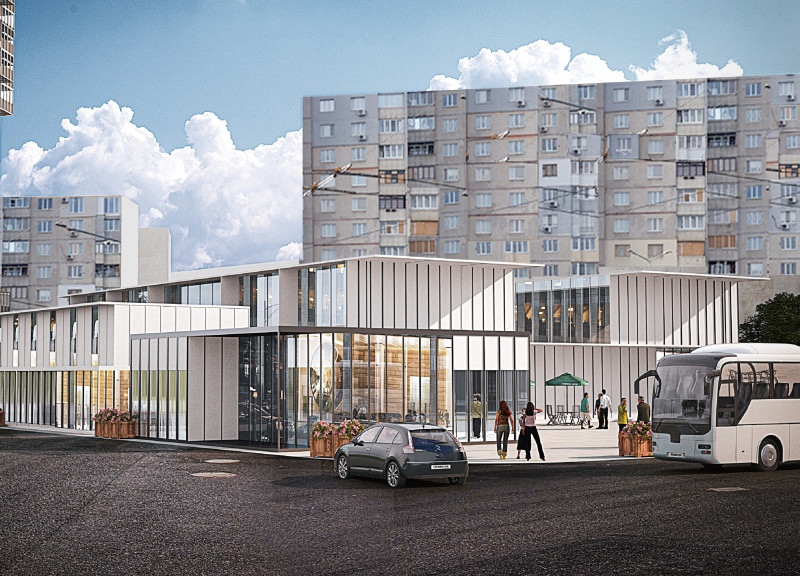5 key facts about this project
As one examines the overall concept of the design, it becomes evident that the core idea revolves around sustainability and a strong connection to nature. The architect has implemented design strategies that promote environmental responsibility, incorporating renewable energy sources and passive design elements which enhance thermal efficiency. This commitment to sustainability is evident in the use of natural materials, which not only contribute to the building's aesthetic but also ensure it harmonizes with the surrounding landscape.
The exterior of the building demonstrates a clean, modern facade characterized by its use of large windows. The expansive glazing is not merely an aesthetic choice; it serves to maximize natural light while providing unobstructed views of the nearby picturesque environment. The integration of overhangs mitigates solar gain during the warmer months, showcasing an understanding of climatic considerations that further exemplifies the project’s sustainable design ethos.
In terms of materiality, the project employs a selection of locally sourced materials such as timber, stone, and glass. The warm tones of the timber add a welcoming quality to the building, reflecting the natural environment and inviting visitors into the space. The stone provides a sturdy, grounded element, anchoring the design and establishing a dialogue between the building and its site. Glass, on the other hand, introduces a sense of lightness and transparency, allowing for a fluid interaction between indoor and outdoor spaces. This careful curation of materials underscores the project's commitment to sustainability while enriching the overall user experience.
Functionality is at the heart of the project, with spaces meticulously planned to cater to the needs of its users. The layout promotes flow and accessibility, ensuring that all areas of the building are easily navigable. Public spaces are designed to encourage interaction, featuring open gathering areas that foster community connection, while quieter zones provide respite and contemplation. The careful zoning of activities within the building illustrates a profound understanding of user experience and reflects contemporary societal needs.
Unique design approaches are evident throughout the project, particularly in how the architecture responds to its environment. The building’s orientation leverages natural light and wind patterns, reducing reliance on artificial heating and cooling systems. Furthermore, landscaping plays an integral role in the overall design, with native plants selected for their low maintenance and water efficiency. This holistic approach not only enhances the aesthetic appeal of the site but also reinforces the project's identity as a sustainable architectural endeavor.
In reviewing specific architectural elements, one might note the innovative roof structure that not only adds visual interest but also serves practical functions—collecting rainwater and providing natural insulation. Such details exemplify how thoughtful design can elevate both form and function.
The project's architectural plans, sections, and detailed descriptions reveal layers of design thought that make it a compelling case study in modern architecture. Visitors and stakeholders are encouraged to explore the presentation of the project further, as it offers deeper insights into the architectural strategies employed and the ideas that shaped its development. Understanding the interplay of form, function, and material in this project provides a rich appreciation for contemporary architectural practices. Exploring these elements will deepen one’s understanding of how architecture can reflect both human values and ecological awareness in today's built environment.


 Hao Zhou,
Hao Zhou,  Yue Liang,
Yue Liang,  Ruijing Sun
Ruijing Sun 























